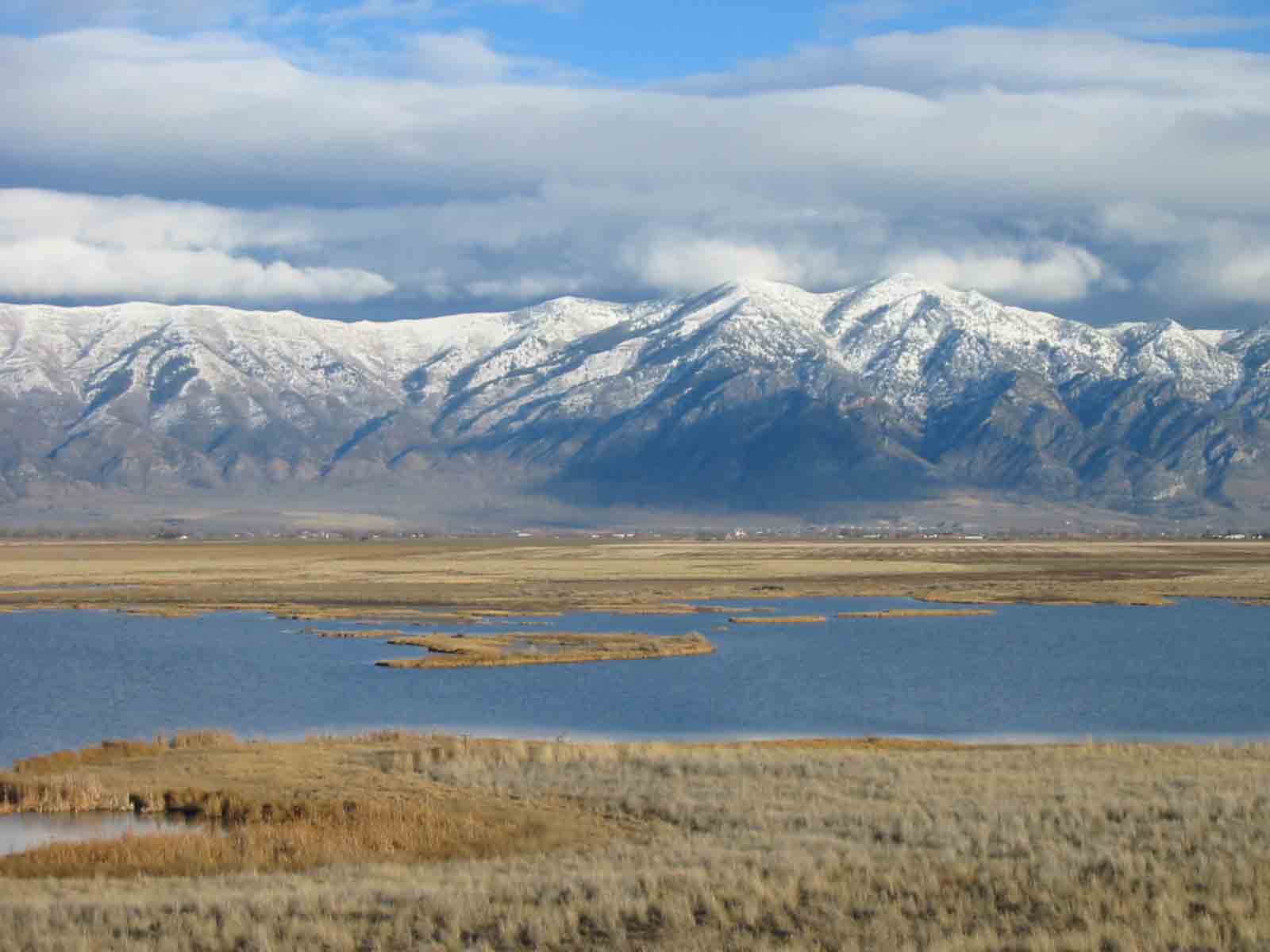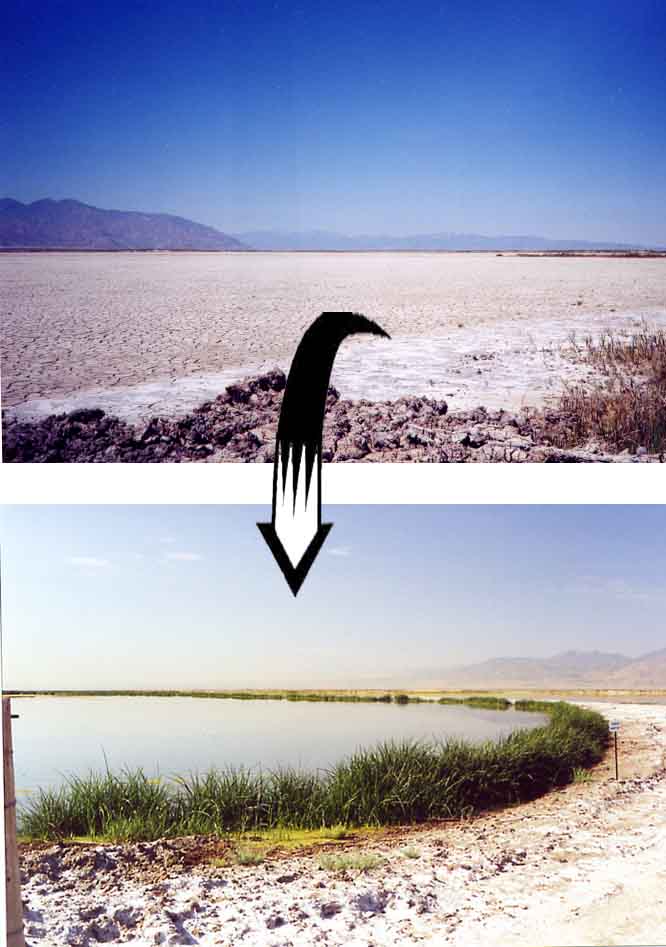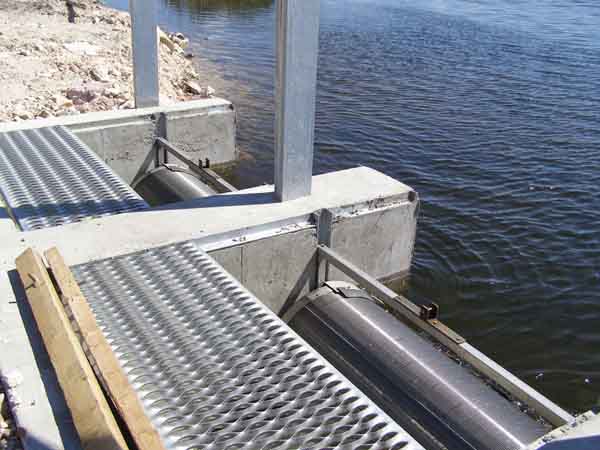Utah Wetlands Initiative
 Ducks Unlimited's Utah Wetlands Initiative is the synthesis of all the wetlands and waterfowl conservation needs of the Great Salt Lake wetlands ecosystem. In May 2003, Ducks Unlimited held its annual National Convention in Salt Lake City and officially launched the Utah Wetlands Initiative. The traditional approach of tackling one small project at a time was not meeting the increasing demands of wetlanda conservation in the context of an expanding urban population, decreasing water supplies for wildlife and deteriorating capabilities to manage wetlands habitat effectively. A comprehensive approach to conserve the Great Salt Lake wetlands ecosystem was apparent and needed. In this spirit, Ducks Unlimited launched the Utah Wetlands Initiative.
Ducks Unlimited's Utah Wetlands Initiative is the synthesis of all the wetlands and waterfowl conservation needs of the Great Salt Lake wetlands ecosystem. In May 2003, Ducks Unlimited held its annual National Convention in Salt Lake City and officially launched the Utah Wetlands Initiative. The traditional approach of tackling one small project at a time was not meeting the increasing demands of wetlanda conservation in the context of an expanding urban population, decreasing water supplies for wildlife and deteriorating capabilities to manage wetlands habitat effectively. A comprehensive approach to conserve the Great Salt Lake wetlands ecosystem was apparent and needed. In this spirit, Ducks Unlimited launched the Utah Wetlands Initiative.
Comprehensive wetlands conservation in the Great Salt Lake wetlands ecosystem includes performing scientific research on existing habitat quality and conservation needs, actively restoring degraded areas, enhancing existing wetlands and protecting remaining important areas. Ducks Unlimited's Utah Wetlands Initiative is actively pursuing each of these.
Research: The Great Salt Lake Wetlands Assessment Project is in its first phase of evaluating the existing managed wetland impoundments to determine habitat quality  and extent. Future phases will determine the waterfowl carrying capacity of managed wetlands in the Great Salt Lake wetlands ecosystem. The results of this investigation will help guide future Ducks Unlimited efforts to improve management, and to restore and enhance these important wetlands.
and extent. Future phases will determine the waterfowl carrying capacity of managed wetlands in the Great Salt Lake wetlands ecosystem. The results of this investigation will help guide future Ducks Unlimited efforts to improve management, and to restore and enhance these important wetlands.
Restoration: Ducks Unlimited has more than a decade-long history of restoring wetlands in Utah, primarily those associated with the Great Salt Lake. Our past partnership projects include assisting the Bear River Refuge in restoring upland nesting habitat and evaluating total water needs for their main impoundments, assisting the Division of Wildlife Resources with restoring habitat on multiple waterfowl management areas, partnering with The Nature Conservancy to restore wetlands on their Great Salt Lake Shorelands Preserve and helping multiple private duck clubs around the lake restore their managed wetlands. With each project completed, five more potential projects surface; the wetlands restoration needs in the region are extensive.
 Enhancement: Control of exotic species is a major concern for wetland managers but was largely ignored until recently. During the last two decades, overall wetland quality of Great Salt Lake wetlands has degraded, primarily due to spread of Phragmites australis and the common carp. In response, Ducks Unlimited has extended our partnership with CropLife America into Utah to assist with chemical weed control on Utah Wetlands Initiative projects. Further, our implementation of carp-proof fish screens is a proven method of enhancing wetlands. Future wetlands enhancement projects abound and will require extensive effort, partnerships and resources.
Enhancement: Control of exotic species is a major concern for wetland managers but was largely ignored until recently. During the last two decades, overall wetland quality of Great Salt Lake wetlands has degraded, primarily due to spread of Phragmites australis and the common carp. In response, Ducks Unlimited has extended our partnership with CropLife America into Utah to assist with chemical weed control on Utah Wetlands Initiative projects. Further, our implementation of carp-proof fish screens is a proven method of enhancing wetlands. Future wetlands enhancement projects abound and will require extensive effort, partnerships and resources.
 Protection: Uncontrolled urban expansion threatens many productive, but unprotected, wetlands. There are several current and excellent opportunities to "block-up" wetlands adjacent to existing protected areas, provide habitat connectivity and buffer impacts from nearby urban areas. Like other wetland conservation activities, protection is often a partnership effort. Ducks Unlimited has successfully collaborated with The Nature Conservancy on multiple protection projects on their preserve. We will not only continue our strong partnerships in existing focus areas, but we will expand into additional areas, particularly in the north part of the lake. Utilizing Ducks Unlimited's strong federal, state and nonprofit partnerships, existing acquisition plans and collaboration with willing sellers, the best of the unprotected wetlands will be secured for future generations.
Protection: Uncontrolled urban expansion threatens many productive, but unprotected, wetlands. There are several current and excellent opportunities to "block-up" wetlands adjacent to existing protected areas, provide habitat connectivity and buffer impacts from nearby urban areas. Like other wetland conservation activities, protection is often a partnership effort. Ducks Unlimited has successfully collaborated with The Nature Conservancy on multiple protection projects on their preserve. We will not only continue our strong partnerships in existing focus areas, but we will expand into additional areas, particularly in the north part of the lake. Utilizing Ducks Unlimited's strong federal, state and nonprofit partnerships, existing acquisition plans and collaboration with willing sellers, the best of the unprotected wetlands will be secured for future generations.
Ducks Unlimited is the expert in comprehensive wetlands conservation. With our continental and flyway approach, we've been the world's "leader in wetlands conservation" since our inception in 1937. Utah's Great Salt Lake wetlands ecosystem in an integral part of both the Pacific and Central Flyways. Wetlands conservation today will determine the quality of life for future generations of Utahns, both waterfowl and people. There is much to do before we succeed, and we need your help.
Ducks Unlimited uses cookies to enhance your browsing experience, optimize site functionality, analyze traffic, and deliver personalized advertising through third parties. By continuing to use this site, you agree to our use of cookies. View Privacy Policy